Investors often live in a completely different world than the rest of humanity. And this has never been clearer than what we’ve seen this year in the electric vehicle market.
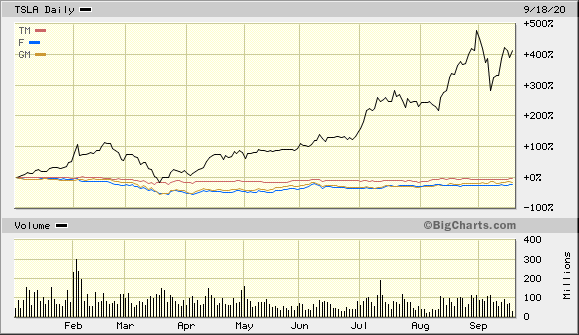
Tesla Inc.’s (NASDAQ: TSLA) historic rise to prominence in the stock market isn’t without some merits, for sure. But it isn’t even in the top 12 in terms of U.S. car sales.
And while its internal growth and expected impact may justify its incredibly high stock price to many, good investors should look at all the facts.
It’s no secret that electric vehicles are definitely here to stay and will only increase in demand over the coming five- and ten-year periods. But diesel, gasoline, and hybrid vehicles aren’t going away either.
Some investors do realize at least part of this. Rather than looking at carmakers themselves, there’s a better way to judge sentiment in the auto industry.
When you think of precious metals, no doubt your go-to is gold and silver. But there are others. The platinum-group metals, or PGM, include six middle-of-the-periodic-table metals.
These six teeters somewhere between industrial and truly precious. But with the rise of emissions standards over the last several decades, three of them have nearly made the jump.
Palladium, rhodium, and, obviously platinum is considered by many to be precious, just like gold and silver. In fact, these metals are even being turned into coins, including by the U.S. Mint.
Still, just like silver, they remain largely industrial in terms of overall demand.
Eighty percent of palladium and rhodium mined and recycled in any given year goes into catalytic converters that reduce emissions in cars. Forty percent of platinum is used in autocatalysts.
Despite the similarities between these three, they do trade quite differently. Let’s look at platinum and palladium, as they are the heaviest traded in the PGM. Platinum has largely remained the flattest of all precious metals.
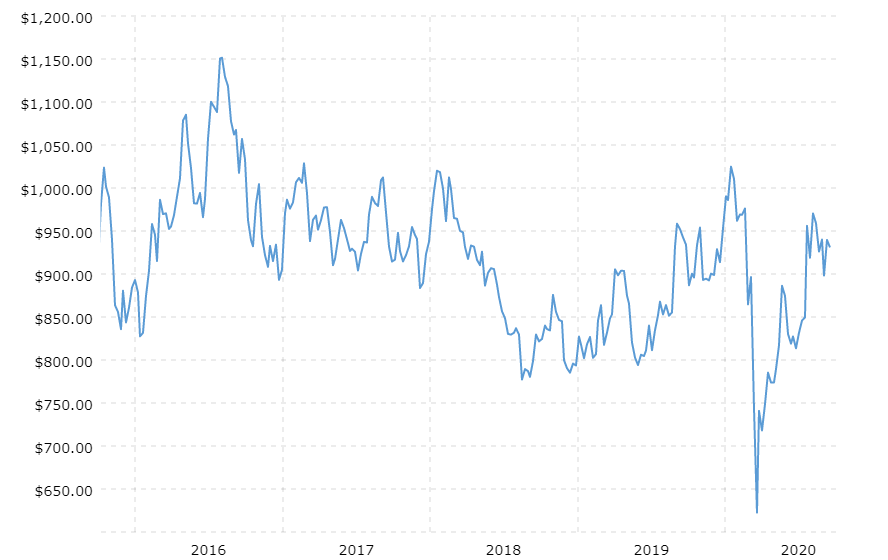
But this is especially true compared to palladium over the last five years.
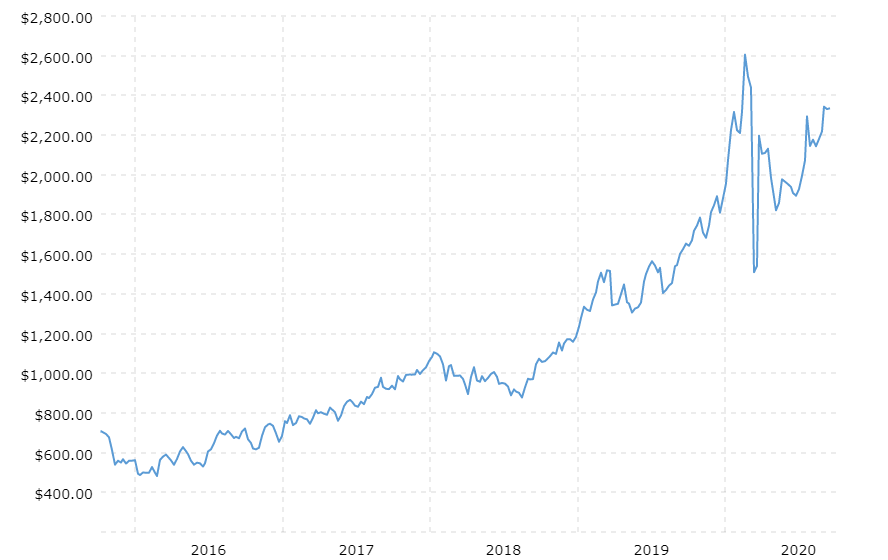
Once trading at a discount to platinum, palladium now sells for around two and a half times its price.
One reason for the spike recently is due to palladium’s more dominant role in gasoline cars compared to platinum’s similar role in diesel-powered ones.
This might have remained true for the next dozen years as diesel is more-rapidly being overtaken by EVs, primarily in Europe.
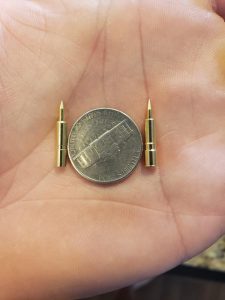
Grab a piece of paper and pen to write this down…
Because you’re about to see the name and ticker symbol of the ONLY 5G STOCK every investor should own.
You can get the name and ticker of this company right here, no strings attached. But you better act fast…
Because the Federal Communications Commission, the government agency in charge of 5G, just scheduled a major announcement that would send shares soaring once announced.
Don't miss out. Click Here to Get #1 5G play for 2020 before the next market close.
But then Covid-19 happened. All car manufacturers saw sales plummet. So, demand for these metals likewise diminished.
However, that’s only one side of it. Both have seen their supply-side drop too. Mine closures in South Africa, where the majority of these metals are found, have been going on for a few years. But when that nation shut down its economy during the spring, it cut off nearly all PGM production.
Strangely, only palladium responded to this. It has recovered much of its early-year rally and now sits up 22% year to date. Platinum remains down nearly 5% in 2020. This is an opportunity. But there are more reasons why platinum is set to rise from here. Some have to do with their other properties.
As noted, platinum is used heavier in diesel vehicles. Where palladium is a larger component in catalytic converters in gasoline ones. But that wasn’t always the case.
Platinum has been used for far longer in this technology. And with the disparity in prices over the last five years, it could be returning as a larger player.
Similar to the gold-to-silver ratio, platinum and palladium are measured against each other. Here we have the palladium-to-platinum ratio. It measures how much platinum is needed to buy an ounce of palladium.
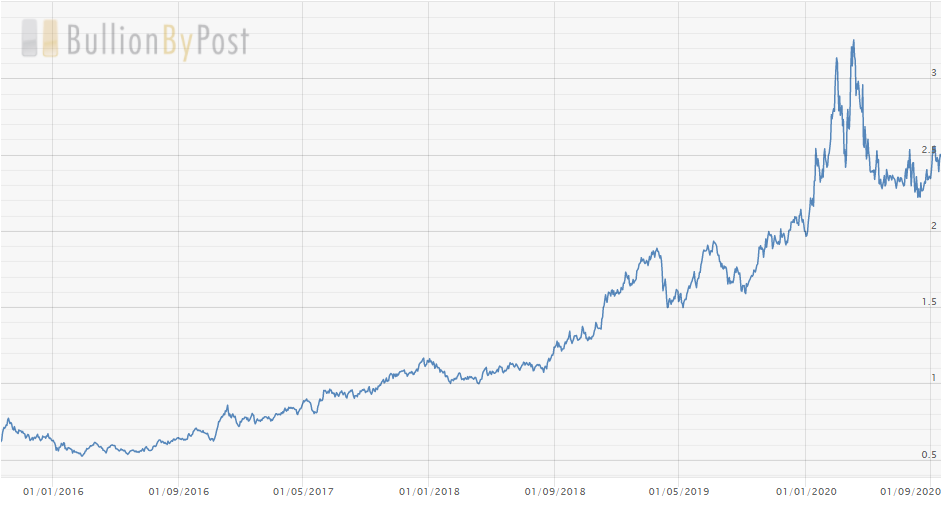
As you can see, it has skyrocketed over the last handful of years. And that is actually a problem.
As palladium transitioned into the role of the largest component in autocatalysts, its demand obviously rose. Its price clearly followed. And now car makers are in a tough position.
And now, with Covid-19 decimating demand, at least temporarily, those same car manufacturers are rethinking their costs.
Switching back to platinum from palladium has been a topic for discussion since the two metals swapped prices. Now, it is more than just a discussion.
The supply side comes into play here too. With both metals suffering heavy production cuts this year, availability is low. Platinum, of which there’s far more of to be recycled, is easier to get ahold of for manufacturers.
And finally, there’s the largely missed piece here. Around one-third of all platinum is used in jewelry. China, which has the largest jewelry industry in the world, largely killed platinum demand in the first half of the year.
The country was the first to shut down at the pandemic outbreak. But it was also the first to restart.
The jewelry stop-and-go only affects platinum in this debate. Palladium won’t get a jumpstart as this valuable end-use industry continues to ramp back up.
Right now, the divergence of these two metals makes some sense on the surface. But as you dig into each one’s near-term outlook, platinum is clearly the winner.
To your prosperity and health,
Joshua M. Belanger
Executive Publisher & Founder